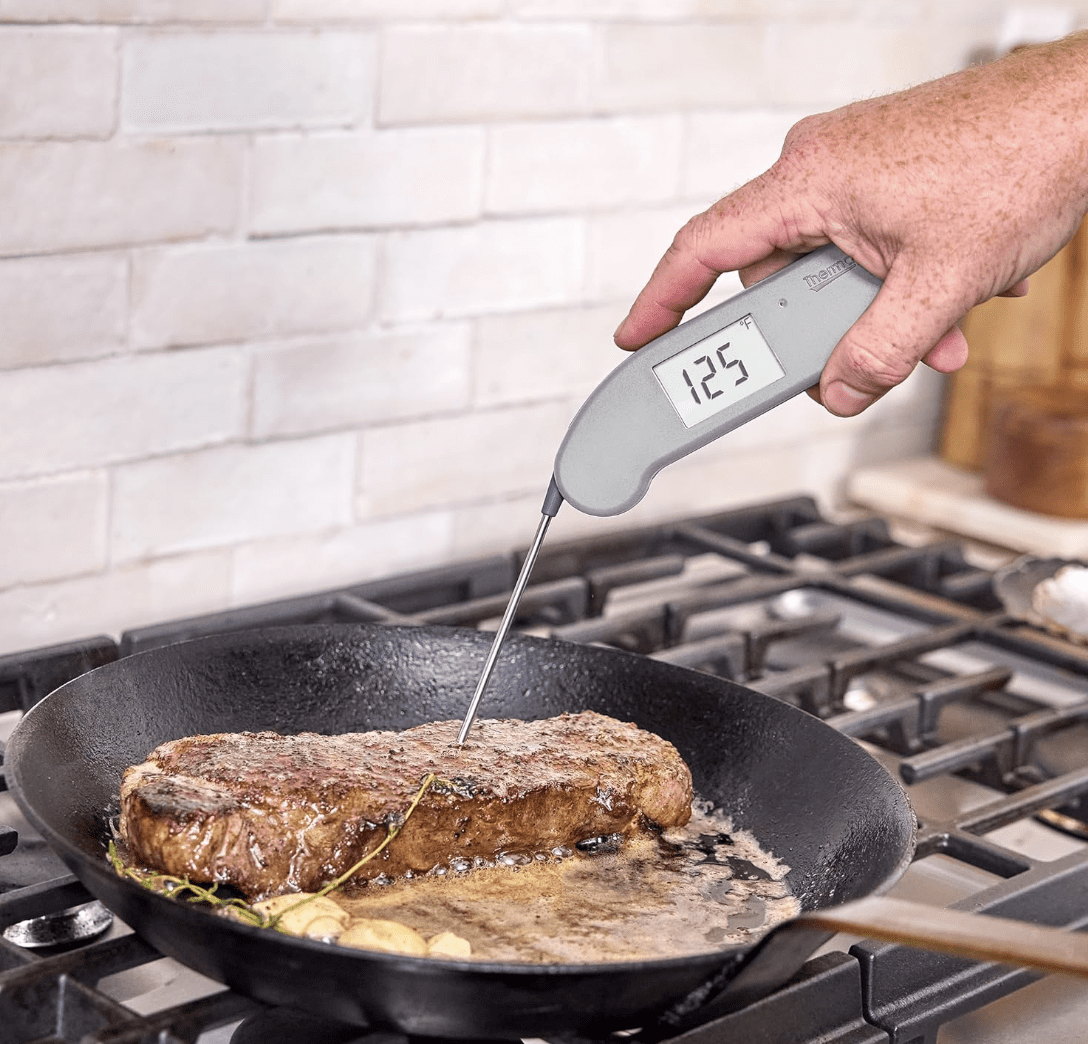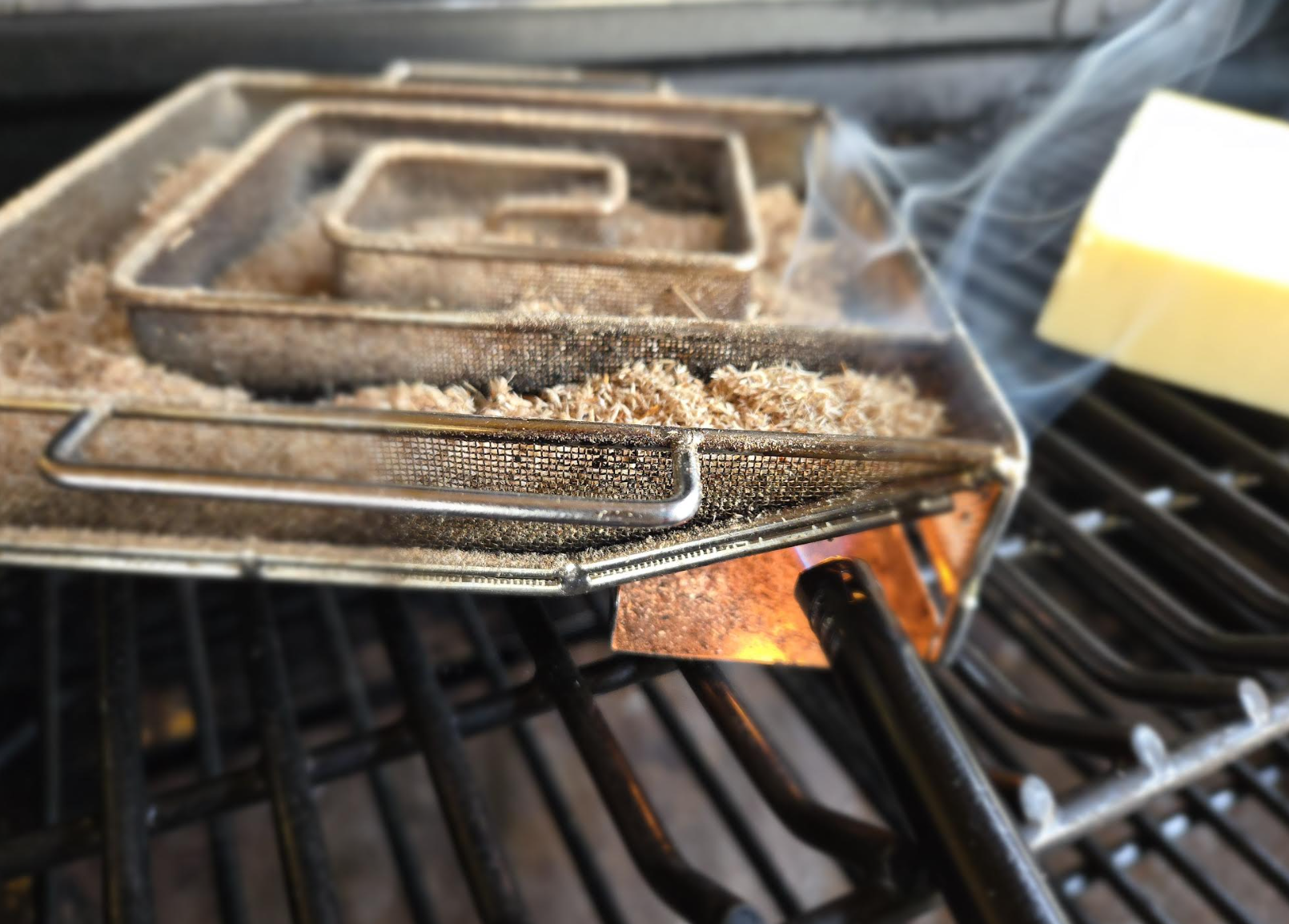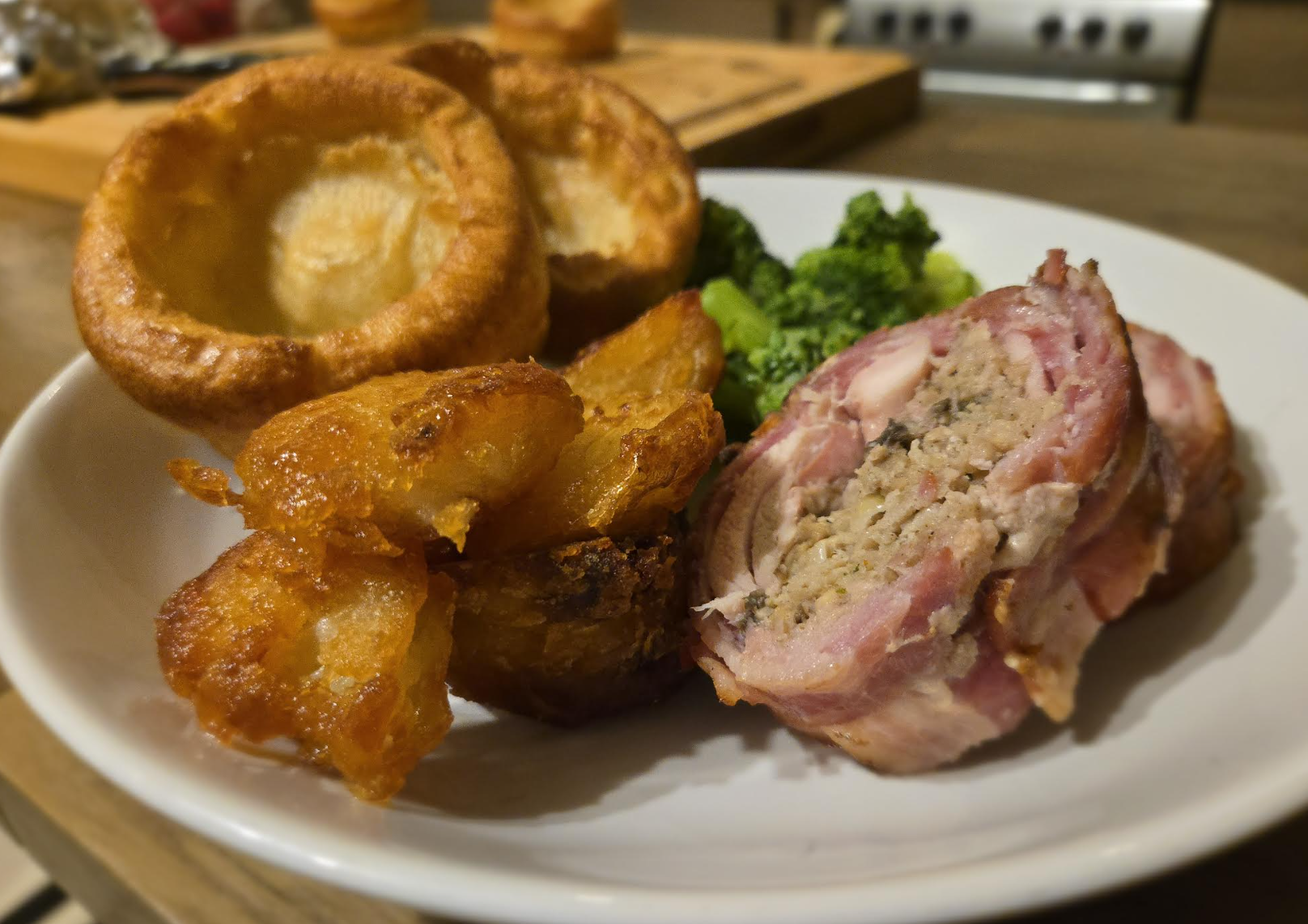Every BBQ enthusiast should have a meat thermometer in their shack. Here’s how to use one effectively.
A meat thermometer is an essential tool when grilling steak, smoking briskets, or cooking a large pork butt overnight. It allows you to spot-check the temperature of your meat, and if it’s connected to an accompanying mobile app — as many now do — you can track the temperature of an overnight cook and ensure that there were no points at which too low a temp threatened food safety.
There are a few types of BBQ meat thermometers you can choose from: older bimetallic options that might be slow to read and may tarnish and warp over time; instant-read thermometers that will give you a temperature but will not have smart mobile connectivity, or probes — either included with a modern smoker or standalone — that feed temperature changes to a mobile app.
I shift between instant-ready thermometers (just make sure you have a spare battery or two!) for day cooking and probes for overnight smokes. Probes can be left in meat, which is a huge plus (especially when you have a long cook ahead of you with brisket or pork), but you may find that the cable included with wired versions is prone to breaking eventually.
Here are 10 useful tips that will enable you to use this kitchen and BBQ tool properly.
1. Insert into the thickest part of the meat:
Avoid bones, fat, or gristle; always position the thermometer in the thickest portion of the meat. Although fat heats (and renders) differently from muscle, bones take longer to rise in temperature and may transfer heat that provides an incorrect result.
Why, though? Heat will take the longest to penetrate the thickest part, and you want to find the lowest temperature point of your joint to ensure safe, even cooking throughout.
For the best readings in poultry, probe the inner thigh region close to the breast but not touching any bone.
2. Avoid Fat and Bone:
Reading the temperature from bone or fatty areas might give inaccurate results. Bones carry heat efficiently, while fat can heat unevenly, resulting in false temperature readings. Therefore, the meat portion should always be used to get accurate results. After all, that’s the part you will be eating later.
3. Correct Insertion Technique:
To get to the centre for thinner pieces like steaks or burgers, always slide the thermometer sideways. If you’re working with a larger cut, such as brisket or pork shoulder, going sideways can also help — but remember, you want the thickest part.
With leaner cuts, start checking your meat around 5 to 10 minutes before you think it will be ready. If you’re cooking something substantial like brisket, start probing an hour before your rest period.
A mistake to avoid is to check the temperature too quickly. Give your thermometer a moment to stabilize before checking the final result.
4. Calibrate and Check Your Thermometer:
Placing your thermometer in ice water (32°F or 0°C) or boiling water (212°F or 100°C) can help you routinely check its accuracy. If the thermometer reading is not as expected, either replace or adjust it. Normally, you’ll find a reset button (or a small hole with a tiny button that will require a toothpick) to restore your BBQ meat thermometer to factory — if your sensor isn’t playing ball, try that before purchasing a new one.
5. Clean After Every Use:
To avoid cross-contamination, always thoroughly clean your thermometer after every use. Use hot, soapy water or disinfection wipes, especially when rotating between different kinds of meat (I’m looking at you, poultry). This can also help prolong the life of your BBQ meat thermometer.
6. Know Safe Temperatures:
Learn or note down the USDA-advised internal temperatures for different meats, especially when you are just starting out. Of course, it’s worth noting that BBQ and smoking techniques don’t go just on safe temperatures alone as the right texture or fat rendering might require a higher internal temp (or the famous brisket jiggle), but you don’t want your meat to end up in a dangerous range, especially for a long period of time.
- Poultry: 165°F (74°C)
- Ground Meats: 160°F (71°C).
- Fish: 145°F (63°C)
- Beef, pig, lamb (steaks, roasts, chops) 145°F (63°C)
7. Track Carryover Cooking:
Residual heat causes meat to continue cooking even when you take it off a heat source. To stop overcooking, consider removing meat from the heat when it’s a few degrees under your sweet spot.
Some experts recommend around five degrees under for larger cuts, and we agree — trust the process. It takes time for meat to reduce to something close to room temperature and it will still be cooking. After all, you can’t plunge brisket into an ice bath like you can with an egg.
8. Select the Correct Type of Thermometer:
Depending on how you cook, decide on either instant-read or probe leave-in thermometers. While leave-in probes are appropriate for monitoring temperatures throughout the cooking process, instant-read thermometers are quick and perfect for checking temperatures at the end of cooking.
You’ll find many cheap and affordable instant readers over at Amazon and similar retailers.
9. Avoid Frequent Oven and Grill Lid Opening:
Opening the grill or oven regularly to check temperatures causes heat loss and might uneven result in uneven cooking. Track temperatures without opening the oven with a thermometer featuring an external display or wireless connectivity, or ensure you only start checking with a probe at the later stages of a cook.
After all, if you’re looking at it, it’s not cooking.
10. By Eye Improvement:
Using a meat thermometer helps you become more familiar with cooking times and temperatures, improving results over time. Keep in mind, however, that you shouldn’t rely solely on a temperature probe to tell you when something is ready to pull off. It might be off a few degrees, for example, and so learning over time and educating yourself on texture and resistance is a plus!
Following these guidelines will help you ensure that your meats are cooked properly and to your desired degree of tenderness, improving the taste and food safety of your cooking.
Authentic Texas BBQ in Kent – hire professional BBQ caterers for your next event.




